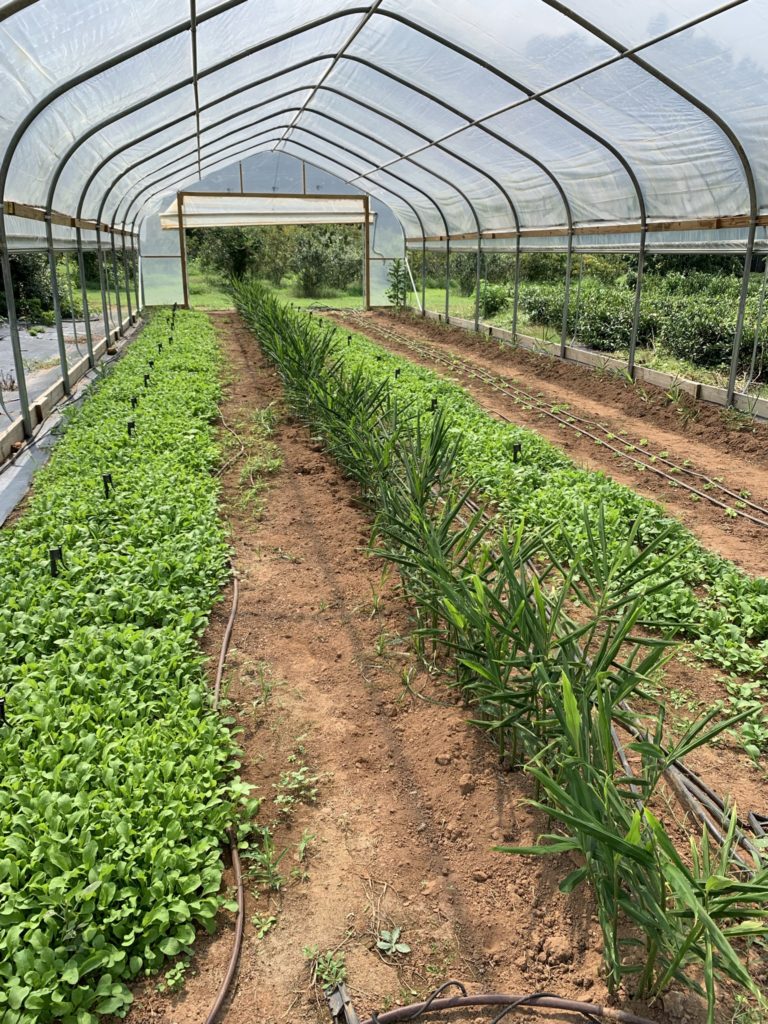By Ayanava Majumdar, Chip East and Eric Schavey
The southeastern United States is the hotbed of insect and disease issues in vegetable crops. Growers constantly have to deal with not only established pest and weed issues, but also the invasive ones. Organic farming of vegetables is a challenge for producers everywhere in the United States, and the battle against insect pests is particularly intense in the Deep South.

In Alabama, the overlapping generations of cabbage loopers and fall armyworm caterpillars along with Harlequin bugs can rapidly decimate a good crop of brassicas. So, watch out and scout to determine action to prevent crop failure. If you are planning to shift to fall or winter crops after the summer, here are some general reminders from the integrated pest management (IPM) perspective:
- Sanitation is an IPM Level 1 tactic that is part of the pest prevention tactics and has long-term consequences for agriculture. Sanitation includes removal of plant or crop debris immediately after production is over. Don’t let the vines or plant debris rot in place while you are busy with other things. Insects like squash vine borers, squash bugs, armyworms and cutworms can be slowed down from building up on organic farms with regular sanitation practices.
- Sanitation also includes weed control in and around vegetable beds. If you are a high-tunnel producer, control weeds inside and outside the tunnel before shifting to the new crop. Weed control becomes tough and very labor-intensive once a crop is in the ground.
- If you mulched regularly during the summer, then this is a good time to check the status of the mulch. Take a look under the mulch material to note any pest buildup or excessive moisture to prevent insect or disease carryover. Proper aeration near the root zone is important. Excessive mulching can hide pests like armyworm and even snails or slugs that live off the organic matter.
- Make sure you re-fertilize and rejuvenate the soil as you shift to other crops. If you are a small or beginning farmer, routine soil sampling and knowledge of nutrient levels can help you cut costs with less guesswork. Keep good records manually or use phone apps or desktop software to automate your record-keeping efforts.
- If you need to put down any soil insecticide for insect pest control, then this transitioning time is best for granular insecticide applications. If you have a history of snails and/or slugs in your vegetables, then limited soil disturbance and application of granular baits can help reduce infestations. Prevent water clogging in the field and manage irrigation when you apply soil-based insecticides.
- Carefully plan your crop rotation to avoid pest buildup. Consult your Extension office for the latest recommendations. Keep low-cost pest exclusion fabric handy for installing over brassica crops, especially to protect the small plants from moths and yellowmargined leaf beetles. Several pest-exclusion articles in the past provide details on how to implement a temporary system that cuts use of expensive organic insecticides and reduces labor.
As a last note, specialty crop producers should scout weekly or more often. To stay in touch with additional IPM research and pest alerts in Alabama, producers should subscribe to the Alabama IPM Communicator E-newsletter (www.aces.edu/ipmcommunicator). Use the Farming Basics mobile app to subscribe to the newsletter, identify common insects, connect to beginning farmer resources and to contact a commercial horticulture regional Extension agent in Alabama.
Ayanava Majumdar is an Extension professor and entomologist at Auburn University. Chip East and Eric Schavey are regional Extension agents with the Alabama Cooperative Extension System.









